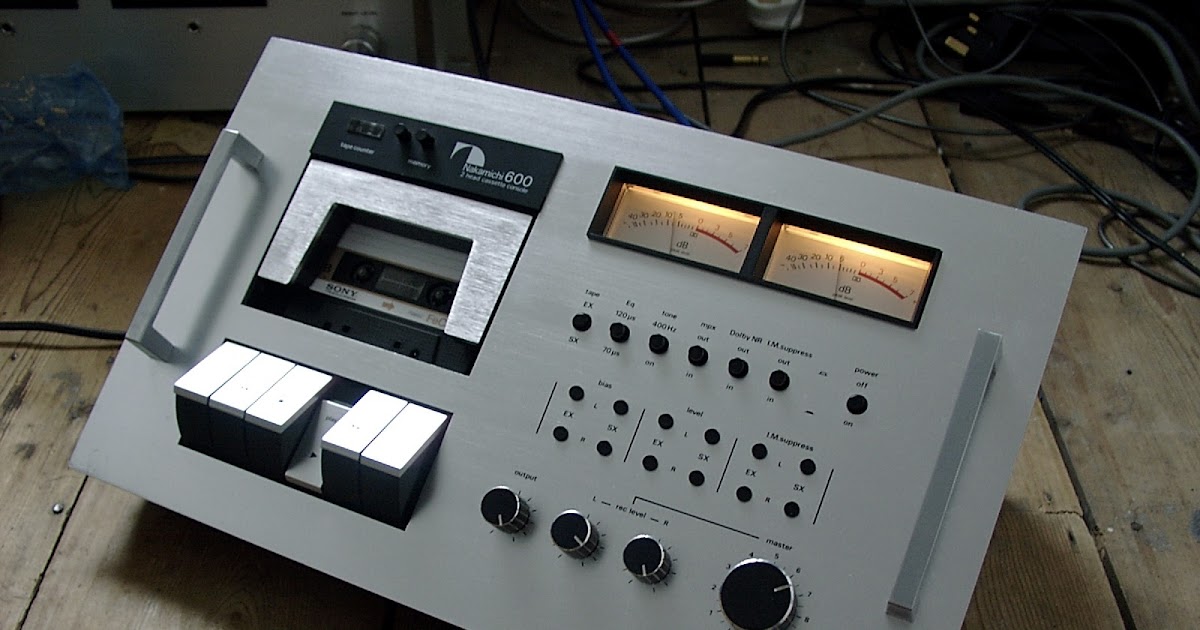In comparison to any modern music portable, Sony’s WM-D6C Walkman Professional cassette recorder is a massive, brick-like device. It’s ridiculously large by today’s standards, measuring 180x90x40mm and seeming like an eighties phone compared to the latest iDevice. When you look closer, however, you’ll notice the best-sounding portable ever created…
Let’s not forget that Sony, not Apple, invented the portable audio business thirty-five years ago. Let’s not forget that Sony offered a wide range of sizes and shapes, as well as a single, no-holds-barred ‘maximum performance’ model – the 1984 Walkman Pro you’re looking at right now. More amazingly, the Walkie Pro outperformed practically every full-sized cassette deck in a straight fight, with only the true greats like Nakamichi’s CR-7E surpassing it. As nice as an iPod is, it can’t compete with a £300 hi-fi standalone CD player – the latter wins hands down. This demonstrates the Sony’s enormous accomplishments and puts its brilliance into appropriate context.
Indeed, the Pro was so unique that it spawned a new subculture of “mobile audiophiles.” Audiophiles used their Linn Sondeks to play their precious vinyl, then hooked the WM-D6C into their preamp tape outs and made excellent copies to listen to on the go or in the car on their top-of-the-line Pioneer or Kenwood car stereos. In their gap year, backpackers took Walkie Pros to India, broadcasters gave up their Uher Report 4000 open reels for them, and musicians spent many hours out and about recording ‘sound FX’ with them to blend into their latest works. It was quite practical, as well as stylish.
What makes you so unique? It all came down to Sony’s decision to use the greatest heads and transport mechanisms available, as well as its capacity to manufacture them with such precision. Even when it was first released in 1985, it was not a fashion leader, but it didn’t matter because of its supreme quality. When all others were smaller, brighter, and plasticky, the Walkie Pro arrived with a black coated aluminium case. Then there was the extra ‘Record’ button, which was nearly unheard of on a tape player of this type. Another giveaway was the Dolby selector, which on later versions offered both B and C noise reduction methods via a little slider switch. Then there came the bank of little rectangular LEDs with +3dB and +6dB peak indicators flashing.
A facility to turn off the quartz-lock speed control to allow variable pitch playback was no less intriguing when I looked around the back. This was still another indicator of its high prestige, as most standard cassette decks lacked such a feature. There was also a mechanical tape counter, a big battery box with four AA batteries, and a long volume slider that controlled one of the most powerful headphone amplifiers available. The transport was unlike any other portable, with its hefty capstan and expensive-looking heads. The WM-D6C was clumsy and over-engineered, lacking the airs and graces of most hi-fi cassette decks, and its non-logic assisted controls snapped into place in an agricultural manner. However, this did not deter me because it has a ‘carved from solid’ feel to it.
When you feed it a decent metal tape, instead of the normal splashy, mushy treble, everything comes through crystal clear and vibrant. A crisp, confident soundstage with bold lateral and front-to-back image has replaced the conventional wobbling Walkman mid-band with imprecise imaging and fuzzy clarity. Then there’s the bass: powered by batteries or a high-quality DC supply, the low frequencies have a speed and power that few other tape machines have ever possessed.
The heads on all but the final versions are so good that you can easily push the record levels to +6dB using a Sony Metal ES blank. The end effect is nothing short of amazing – so tight, so powerful, so clean, so dynamic, and so musical. The normal cassette annoyances (wow and flutter, tape hiss, compression) have been completely eliminated. The Walkman Professional, crammed into a box and powered by batteries, was one of Sony’s best high-end hi-fi cassette transports. The WM-record/replay D6C’s head is similarly a high-end laser amorphous affair, and to make up for the lack of two capstans (which were too difficult to install into such a small package), the WM-D6C received the first quartz-lock servo control to grace a Sony cassette deck. This explains its exceptional speed stability and overload performance.
Nowadays, the only issue with buying used is that, due to their beautiful design, many individuals misuse them on a regular basis, running them into the ground. When put to ‘pro usage,’ the transport can easily break, and the lack of adequate auto-stop (its one noticeable flaw) can cause the motor to fail. The heads, too, do not last indefinitely. So be on the lookout. A newish, mint, low-use example is worth £200, but there are shady guys out there selling twenty-year-old nails for upwards of £150 — avoid them. However, if you get a nice one, they’re still a gorgeous piece of analogue gear that will put any modern music player to shame!






